
The Enchanted Path: Gnalp Trail in Liechtenstein
Discover the Gnalp Trail in Liechtenstein: a scenic hiking path offering panoramic alpine views, diverse wildlife, and a touch of local culture and history.
Nestled in the heart of the Alps, the Gnalp Trail in Liechtenstein is a hidden gem waiting to be explored. This trail is a haven for nature lovers, offering stunning panoramic views of the surrounding mountains and valleys. As you walk along the path, you'll be greeted by lush greenery, vibrant wildflowers, and the soothing sounds of nearby streams. The Gnalp Trail is perfect for hikers of all levels. Whether you are an experienced trekker or a casual walker, you will find the trail both challenging and rewarding. The clearly marked paths ensure that you can enjoy your hike without any worries about getting lost. Along the way, you will come across several rest spots where you can take a break and soak in the breathtaking scenery. One of the highlights of the Gnalp Trail is its rich biodiversity. The area is home to a variety of wildlife, including deer, marmots, and an array of bird species. If you're lucky, you might even spot a golden eagle soaring high above. The trail is also a great place to learn about the local flora, with many informational signs providing interesting facts about the plant life. In addition to its natural beauty, the Gnalp Trail offers a glimpse into the region's culture and history. You will pass by traditional alpine huts and ancient stone structures that tell the story of Liechtenstein's past. The trail is a wonderful way to connect with nature while also gaining a deeper appreciation for the local heritage.
Local tips in Gnalp Trail
- Wear sturdy hiking boots as the trail can be uneven and rocky in places.
- Bring a refillable water bottle; there are several fresh water springs along the trail.
- Check the weather forecast before heading out, as conditions can change quickly in the mountains.
- Start your hike early in the morning to avoid the midday sun and to have more time to explore.
- Look out for informational signs along the trail to learn about the local flora and fauna.
The Enchanted Path: Gnalp Trail in Liechtenstein
Nestled in the heart of the Alps, the Gnalp Trail in Liechtenstein is a hidden gem waiting to be explored. This trail is a haven for nature lovers, offering stunning panoramic views of the surrounding mountains and valleys. As you walk along the path, you'll be greeted by lush greenery, vibrant wildflowers, and the soothing sounds of nearby streams. The Gnalp Trail is perfect for hikers of all levels. Whether you are an experienced trekker or a casual walker, you will find the trail both challenging and rewarding. The clearly marked paths ensure that you can enjoy your hike without any worries about getting lost. Along the way, you will come across several rest spots where you can take a break and soak in the breathtaking scenery. One of the highlights of the Gnalp Trail is its rich biodiversity. The area is home to a variety of wildlife, including deer, marmots, and an array of bird species. If you're lucky, you might even spot a golden eagle soaring high above. The trail is also a great place to learn about the local flora, with many informational signs providing interesting facts about the plant life. In addition to its natural beauty, the Gnalp Trail offers a glimpse into the region's culture and history. You will pass by traditional alpine huts and ancient stone structures that tell the story of Liechtenstein's past. The trail is a wonderful way to connect with nature while also gaining a deeper appreciation for the local heritage.
When is the best time to go to Gnalp Trail?
Iconic landmarks you can’t miss
Vaduz Castle
Discover the enchanting Vaduz Castle, a historical gem in Liechtenstein offering stunning views and rich heritage.

Burg Gutenberg
Discover the enchanting Burg Gutenberg in Balzers, Liechtenstein, a historic castle offering vibrant live music and cultural events amidst stunning views.

Kathedrale St. Florin
Discover the breathtaking beauty of St. Florin Cathedral, an architectural treasure in Vaduz, Liechtenstein, blending spirituality with stunning design.

Alte Rheinbrücke
Discover the beauty of the Alte Rheinbrücke, a stunning bridge connecting Switzerland and Liechtenstein, surrounded by breathtaking landscapes.
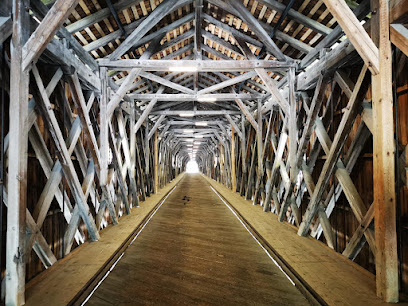
Obere Burg
Explore Obere Burg, a stunning historical landmark in Schellenberg, offering breathtaking views and rich cultural insights into Liechtenstein's heritage.

Steg Parkplatz beim Gänglesee
Explore the breathtaking landscapes of Liechtenstein from the free Steg Parkplatz beim Gänglesee, your gateway to adventure in nature's paradise.

Red House, Vaduz
Discover the historical allure of the Red House in Vaduz, a striking landmark showcasing Liechtenstein's rich architectural heritage and picturesque surroundings.

Wildschloss
Discover Wildschloss, a captivating medieval castle in Vaduz, Liechtenstein, offering breathtaking views, rich history, and stunning hiking trails.

Gafleisattel
Explore Gafleisattel, a breathtaking hiking area in Liechtenstein, where stunning views and serene trails await adventure seekers.

Mittelpunkt von Liechtenstein
Explore the geographical center of Liechtenstein at the picturesque Mittelpunkt von Liechtenstein, a serene landmark perfect for travelers seeking natural beauty.

Stausee Steg
Discover the tranquil beauty of Stausee Steg, a picturesque swimming lake in Steg, Liechtenstein, perfect for relaxation and outdoor adventures.

Fürstensteig
Discover the breathtaking beauty of Fürstensteig in Silum, a paradise for hikers and nature lovers seeking stunning views and unforgettable adventures.

Fürstin-Gina-Weg
Discover the breathtaking Fürstin-Gina-Weg hiking trail in Malbun, where stunning views and serene nature await every adventurer.

Wiaga Tunnel (alter Tunnel Steg)
Discover the historical charm of Wiaga Tunnel in Triesenberg, a must-see attraction blending adventure with stunning alpine scenery.

Tre Cavalli
Explore the captivating Tre Cavalli sculpture in Vaduz, a symbol of artistic elegance and cultural significance amidst stunning landscapes.

Unmissable attractions to see
Bergbahnen Malbun AG
Experience the thrill of winter sports and breathtaking alpine views at Bergbahnen Malbun, Liechtenstein's premier ski resort.

Lama- & Alpakahof Triesenberg
Experience the magic of interacting with llamas and alpacas amidst the breathtaking landscapes of Triesenberg, Liechtenstein.

Red House, Vaduz
Discover the architectural beauty and historical significance of the Red House in Vaduz, a must-visit landmark in Liechtenstein.

Aussichtsturm Gaflei
Discover breathtaking views at Aussichtsturm Gaflei, Liechtenstein's premier observation deck, where nature's beauty unfolds before you.

Wildschloss
Explore Wildschloss, the enchanting historical landmark in Vaduz, offering breathtaking views and a glimpse into Liechtenstein's rich past amidst nature's beauty.

Aussichtspunkt Känzile
Discover the stunning panoramas of Vaduz and the Rhine Valley at the Känzile Observation Deck, a must-visit for breathtaking views in Liechtenstein.

St.-Mamerta-Kapelle
St. Mamerta Chapel in Triesen, Liechtenstein: A tranquil haven of history and spirituality amidst breathtaking landscapes.

Sareiserjoch
Explore the stunning landscapes of Sareiserjoch in Malbun, Liechtenstein, a premier hiking destination for outdoor enthusiasts and nature lovers.

Chemi
Explore the breathtaking hiking trails of Chemi in Silum, a serene escape into nature's beauty that promises unforgettable adventures.

Bärgällasattel
Discover the stunning trails and breathtaking views of Bärgällasattel in Silum, a hiker's paradise nestled in the heart of nature.

Küefer-Martis-Huus
Explore the historical beauty of Küefer-Martis-Huus in Ruggell, Liechtenstein, a cultural gem showcasing local heritage and traditions.

Bench Vaduz - 300 years of Liechtenstein
Discover stunning panoramic views of Vaduz and the enchanting landscapes of Liechtenstein at Bench Vaduz, an essential stop for every tourist.
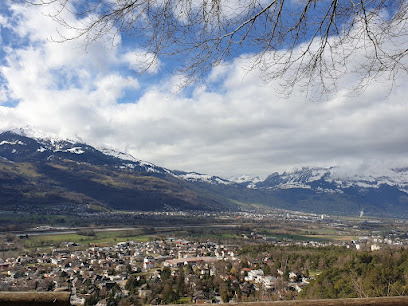
Sassweg hiking trail
Discover the breathtaking beauty of Sassweg hiking trail in Malbun, where nature meets adventure amidst stunning alpine landscapes.

Forscherweg Malbun
Explore Forscherweg Malbun, a stunning hiking area in Liechtenstein, offering breathtaking views and an immersive nature experience for all adventurers.
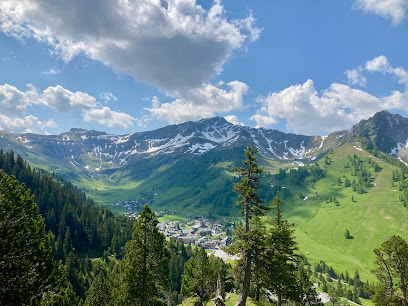
Plattenspitz
Experience the breathtaking hiking trails and stunning scenic views at Plattenspitz in Silum, a must-visit destination for nature lovers and outdoor enthusiasts.

Essential places to dine
Hotel Turna Malbun
Experience comfort and breathtaking views at Hotel Turna Malbun, your ideal retreat in Liechtenstein's beautiful mountains.

Park Hotel Sonnenhof
Discover luxury dining and accommodation at Park Hotel Sonnenhof in Vaduz, Liechtenstein - where elegance meets exceptional service.

Berggasthaus Masescha
Experience authentic Liechtenstein cuisine at Berggasthaus Masescha while enjoying stunning views of the majestic alpine landscape.

Sareis
Experience family-friendly dining at Sareis in Malbun - where delicious cuisine meets breathtaking alpine views.

Adler
Experience authentic Swiss cuisine at Adler in Vaduz – where local ingredients meet traditional recipes for an unforgettable meal.

Kainer
Experience the essence of Liechtenstein at Kainer, where traditional flavors meet modern culinary artistry in a stunning mountain setting.

Wirtschaft zum Löwen
Discover authentic Liechtenstein cuisine at Wirtschaft zum Löwen in Schellenberg – where tradition meets taste.

Hotel | Restaurant Berghaus Malbun Buchserberg
Discover the perfect blend of fine dining, stunning alpine views, and outdoor adventures at Hotel | Restaurant Berghaus Malbun.

Torkel
Experience authentic Swiss cuisine at Torkel in Vaduz - where every meal is a celebration of flavor and tradition.

Gafadura Hütte LAV
Experience authentic Liechtenstein cuisine at Gafadura Hütte LAV, where breathtaking mountain views meet delightful local flavors.
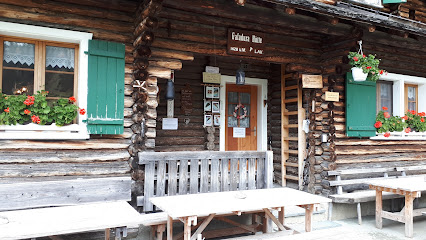
made-in-italy.li
Discover authentic Italian cuisine at made-in-italy.li in Vaduz – where every dish is a journey through Italy's rich culinary heritage.
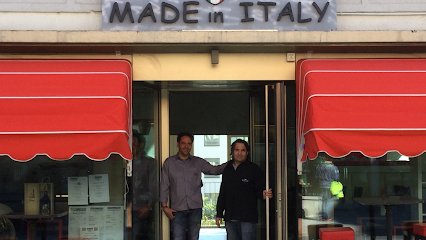
Bäckerei Guflina
Discover the flavors of Europe at Bäckerei Guflina in Triesenberg – where every bite tells a story against stunning mountain backdrops.

Gitzihöll
Experience delicious pizzas in the heart of Malbun at Gitzihöll, where culinary delight meets breathtaking alpine views.

Scanaua Restaurant & Bar
Discover the exquisite flavors at Scanaua Restaurant & Bar in Schaan - where tradition meets modern culinary artistry.

Restaurant Rössle
Experience authentic Liechtenstein cuisine at Restaurant Rössle in Schaan – where local flavors meet exceptional service.

Markets, malls and hidden boutiques
Lama- & Alpakahof Triesenberg
Discover the charm of Lama- & Alpakahof Triesenberg, where friendly llamas and alpacas await amidst breathtaking mountain views.

Cellars of the Prince of Liechtenstein
Experience the rich tradition of winemaking at the Cellars of the Prince of Liechtenstein, where every bottle tells a story.

Ospelt Metzgerei/Genussmarkt
Discover the flavors of Liechtenstein at Ospelt Metzgerei/Genussmarkt, a premier grocery store in Schaan offering local meats, cheeses, and gourmet delights.

Balu Bäckerei Konditorei
Explore the delightful flavors of Liechtenstein at Balu Bäckerei Konditorei, where every pastry tells a story of tradition and taste.

wenaweser zweiradcenter
Explore Wenaweser Zweiradcenter in Schaan, your go-to destination for bicycles and motorcycles in a picturesque setting.

Demmel AG DEMMEL KAFFEE
Experience a coffee lover's oasis at Demmel AG in Schaan, where quality brews and a cozy atmosphere await your visit.
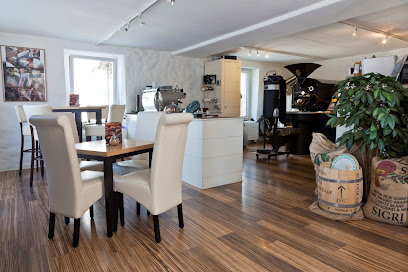
Hoi Liechtenstein - Souvenir Boutique
Explore Hoi Liechtenstein in Vaduz for authentic souvenirs, local wines, and gourmet gifts that capture the essence of this charming principality.

Läderach | Liechtenstein | Vaduz
Experience the exquisite craftsmanship of Läderach, Vaduz's premier chocolate artisan, where every piece is a work of art.

Mühleholzmarkt
Explore Mühleholzmarkt, Vaduz: A diverse shopping mall with unique stores and delightful eateries in the heart of Liechtenstein.

Sigi's Velo Shop-Veloplace
Discover Sigi's Velo Shop in Balzers, where cycling dreams come true in a stunning setting—perfect for adventurers and bike lovers alike.

Brogle Fashion Est
Discover the latest trends at Brogle Fashion in Vaduz, the ultimate destination for stylish clothing and accessories for men and women.

Bikegarage
Discover the best bicycles and gear at Bikegarage in Triesen, your gateway to exploring Liechtenstein's stunning landscapes on two wheels.

Büchsenmacherei Lenherr
Explore the exquisite craftsmanship of firearms at Büchsenmacherei Lenherr, Triesen's premier gun shop and a hub for firearms enthusiasts.
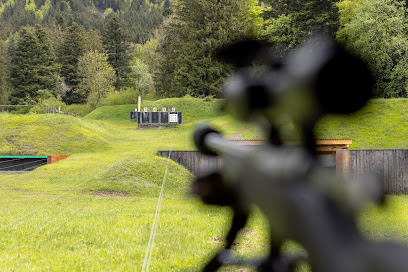
Essential bars & hidden hideouts
Brasserie Burg
Experience exquisite dining at Brasserie Burg in Vaduz, where local flavors meet international cuisine in a cozy, welcoming atmosphere.

Berggasthaus Masescha
Experience exquisite local cuisine and breathtaking mountain views at Berggasthaus Masescha, a culinary treasure in Triesenberg, Liechtenstein.

Scanaua Restaurant & Bar
Experience the rich flavors of Liechtenstein at Scanaua Restaurant & Bar, where local cuisine meets a vibrant dining atmosphere.
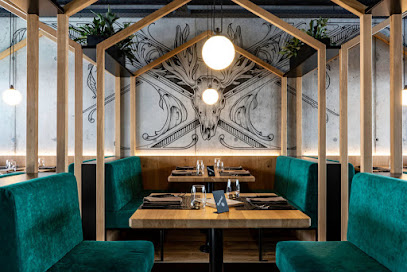
Esquire Bar.Bistro
Discover the sophisticated charm of Esquire Bar.Bistro in Vaduz, where exquisite cuisine meets a vibrant bar atmosphere for an unforgettable experience.
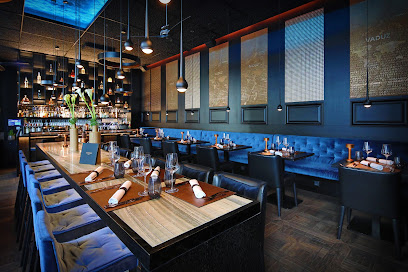
Black Pearl Bar
Discover the Black Pearl Bar in Schaan, a cocktail haven with a lively atmosphere, perfect for unwinding after a day of exploration.

Alp Valüna
Experience authentic Liechtenstein cuisine and breathtaking alpine views at Alp Valüna, the perfect dining destination in Triesen.

Zwei Bar
Experience the vibrant nightlife of Vaduz at Zwei Bar, a stylish venue with exceptional cocktails and an inviting atmosphere, perfect for any occasion.
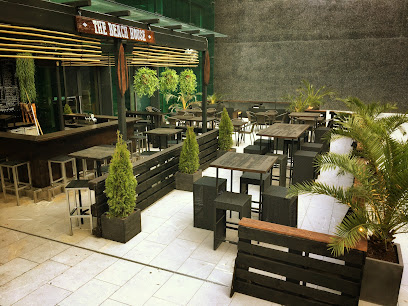
Altenbach Restaurant & Bar
Experience the best of Liechtenstein's culinary scene at Altenbach Restaurant & Bar, where local flavors meet international cuisine.

CENTRUM RESTAURANT & BAR, Vaduz
Experience the best of Vaduz at Centrum Restaurant & Bar, where local flavors meet international cuisine in a cozy setting.

Hotel Restaurant Kulm
Experience exquisite local cuisine with breathtaking views at Hotel Restaurant Kulm, Triesenberg's culinary treasure.

Ethno Cafe Bar
Experience the vibrant atmosphere of Ethno Cafe Bar, a cozy haven in Schaanwald that blends local charm with a diverse drink selection.

Lömagarta
Discover the vibrant Lömagarta beer garden in Vaduz, where local brews and a charming atmosphere await amid stunning Swiss scenery.
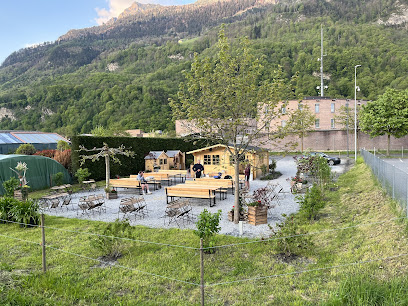
Long John Bar
Dive into the vibrant nightlife at Long John Bar, a popular destination in Schaan offering an extensive drink menu and inviting atmosphere.

Café Bar Vanini
Discover the charm of Vaduz at Café Bar Vanini, where local flavors meet a cozy ambiance in the heart of Liechtenstein.
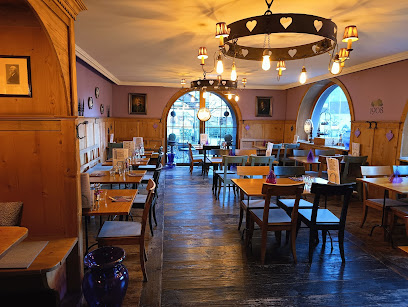
Gaflei Stuba
Experience exquisite local cuisine and breathtaking views at Gaflei Stuba, a must-visit restaurant and café in Liechtenstein.

Local Phrases about Gnalp Trail
-
- HelloHallo
[ha-lo] - GoodbyeAdieu
[a-dyuh] - YesJa
[yah] - NoNein
[nine] - Please/You're welcomeBitte
[bit-teh] - Thank youDanke
[dahn-keh] - Excuse me/SorryEntschuldigung
[ent-shool-dee-gung] - How are you?Wie geht es dir?
[vee get es deer] - Fine. And you?Gut. Und du?
[goot oond doo] - Do you speak English?Sprichst du Englisch?
[shprikhst doo eng-lish] - I don't understandIch verstehe nicht
[ikh fer-shteh-eh nikt]
- HelloHallo
-
- I'd like to see the menu, pleaseIch würde gerne die Speisekarte sehen, bitte
[ikh vur-deh gehr-neh dee shpi-ze-kahr-teh zeh-en, bit-teh] - I don't eat meatIch esse kein Fleisch
[ikh ess-eh kine fli-sh] - Cheers!Prost!
[prohst] - I would like to pay, pleaseIch möchte bitte zahlen
[ikh murkhte bit-teh tsah-len]
- I'd like to see the menu, pleaseIch würde gerne die Speisekarte sehen, bitte
-
- Help!Hilfe!
[hil-feh] - Go away!Geh weg!
[geh vekh] - Call the Police!Rufen Sie die Polizei!
[roo-fen zee dee poh-lee-tsay] - Call a doctor!Rufen Sie einen Arzt!
[roo-fen zee i-nen artsht] - I'm lostIch habe mich verirrt
[ikh hah-beh meekh feh-reert] - I'm illIch bin krank
[ikh been krunk]
- Help!Hilfe!
-
- I'd like to buy...Ich möchte ... kaufen
[ikh murkhte ... kow-fen] - I'm just lookingIch schaue nur
[ikh shou-eh noor] - How much is it?Wie viel kostet es?
[vee feel kohs-teht es] - That's too expensiveDas ist zu teuer
[dahs ist tsoo toy-er] - Can you lower the price?Kannst du den Preis senken?
[kahnst doo den preis zehn-ken]
- I'd like to buy...Ich möchte ... kaufen
-
- What time is it?Wie spät ist es?
[vee shpet ist es] - It's one o'clockEs ist ein Uhr
[es ist iyn oor] - Half past (10)Halb zehn
[halb tsehn] - MorningMorgen
[mor-gen] - AfternoonNachmittag
[nahk-mit-tahg] - EveningAbend
[ah-bent] - YesterdayGestern
[gehs-tern] - TodayHeute
[hoy-teh] - TomorrowMorgen
[mor-gen] - 1Eins
[iyns] - 2Zwei
[tsvai] - 3Drei
[dry] - 4Vier
[feer] - 5Fünf
[foonf] - 6Sechs
[zeks] - 7Sieben
[zee-ben] - 8Acht
[ahkt] - 9Neun
[noyn] - 10Zehn
[tsehn]
- What time is it?Wie spät ist es?
-
- Where's a/the...?Wo ist ein/der...?
[vo ist iyn/dehr] - What's the address?Was ist die Adresse?
[vas ist dee ah-drehs-seh] - Can you show me (on the map)?Können Sie mir zeigen (auf der Karte)?
[ker-nen zee meer tsai-gen (owf dehr kar-teh)] - When's the next (bus)?Wann kommt der nächste (Bus)?
[vahn kohmt dehr nehk-steh (boos)] - A ticket (to ....)Eine Fahrkarte (nach ...)
[iyn-eh fahr-kahr-teh (nahkh ...)]
- Where's a/the...?Wo ist ein/der...?
History of Gnalp Trail
-
The Gnalp Trail's history dates back to prehistoric times when early settlers used its paths for migration and trade. Archaeological findings, including ancient tools and pottery, suggest that the area was inhabited by hunter-gatherer communities long before written records were kept.
-
During the Roman Empire, the Gnalp Trail served as a crucial connecting route between various Roman settlements. Roman artifacts such as coins, road markers, and remnants of fortifications have been discovered along the trail, indicating its significance in facilitating trade and military movements.
-
In the Middle Ages, the Gnalp Trail became an essential trade route for merchants traveling between Switzerland and Austria. The trail was part of the larger network of paths known as 'Via Imperii' that connected the Holy Roman Empire. Historical records mention toll stations and inns that catered to traders and pilgrims.
-
During the Habsburg Monarchy, the Gnalp Trail was strategically important for defense and administration. The Habsburgs constructed watchtowers and small fortifications along the trail to secure their territories. Some ruins of these structures can still be seen today, offering a glimpse into the region's feudal past.
-
In the 20th century, the Gnalp Trail underwent significant development as Liechtenstein modernized its infrastructure. The trail was refurbished to enhance accessibility for hikers and tourists. Historical markers and informative panels were installed to educate visitors about the trail's rich history and cultural significance.
-
The Gnalp Trail is not only a historical route but also a cultural landmark. It hosts various local festivals and traditions that celebrate the heritage of Liechtenstein. Traditional music, dance, and culinary events are often held along the trail, making it a living testament to the region's vibrant culture.
Gnalp Trail Essentials
-
Gnalp Trail is located in the eastern part of Liechtenstein. The nearest international airport is Zurich Airport (ZRH) in Switzerland, approximately 120 kilometers away. From Zurich, you can take a train to Sargans or Buchs SG, and then a bus or taxi to Vaduz, the capital of Liechtenstein. Alternatively, you can rent a car and drive to Vaduz, which takes about 1.5 to 2 hours. Once in Vaduz, local buses can take you to the starting points of the Gnalp Trail.
-
Liechtenstein has an efficient public transportation system, with buses connecting major towns and tourist spots. The LIEmobil bus network is reliable and covers most areas, including routes to and from the Gnalp Trail. For more flexibility, consider renting a car, especially if you plan to explore areas beyond the trail. Biking is also a popular option due to the well-maintained paths. Taxis are available but can be expensive.
-
The official currency in Liechtenstein is the Swiss Franc (CHF). Credit and debit cards are widely accepted, but it's advisable to carry some cash for small purchases or in rural areas. ATMs are available in Vaduz and other major towns. Some establishments may also accept Euros, but the exchange rate may not be favorable.
-
Liechtenstein is one of the safest countries in the world with very low crime rates. However, standard precautions should still be taken. Always keep your belongings secure and be cautious in crowded areas. There are no specific high-crime areas targeting tourists, but it is wise to stay vigilant.
-
In case of emergency, dial 112 for immediate assistance. Liechtenstein has well-equipped medical facilities, and the country is known for its high standard of healthcare. Ensure you have travel insurance that covers medical emergencies. For minor health issues, pharmacies are available in Vaduz and other towns.
-
Fashion: Do dress in layers and wear comfortable hiking shoes when exploring the Gnalp Trail. Avoid overly casual clothing in formal settings. Religion: Do respect local religious sites and traditions. Public Transport: Do be punctual and respect the timetable. Don't speak loudly on public transport. Greetings: Do greet people with a friendly 'Grüezi' or 'Hallo'. Eating & Drinking: Do try local dishes such as Käsknöpfle. Don't tip excessively; a service charge is usually included in the bill.
-
To experience the Gnalp Trail like a local, start your hike early in the morning to enjoy the serene beauty and avoid crowds. Visit local bakeries for fresh pastries and bread. Engage with locals; they are often willing to share insights about the best spots on the trail. Don't miss the scenic viewpoints and take your time to appreciate the natural landscape.
Trending Landmarks in Gnalp Trail
Nearby Cities to Gnalp Trail
-
Things To Do in Schaan
-
Things To Do in Triesenberg
-
Things To Do in Eschen
-
Things To Do in Balzers
-
Things To Do in Gamprin
-
Things To Do in Mauren
-
Things To Do in Schellenberg
-
Things To Do in Ruggell
-
Things To Do in Dornbirn
-
Things To Do in Arosa
-
Things To Do in Bregenz
-
Things To Do in Davos
-
Things To Do in St. Anton am Arlberg
-
Things To Do in St. Moritz
-
Things To Do in Zurich








